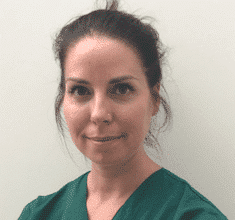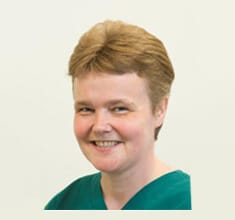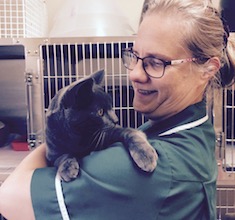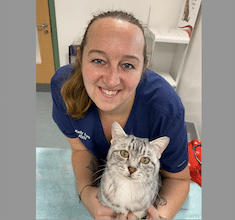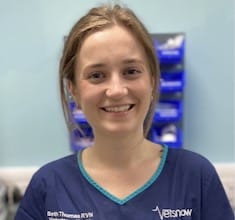Subject Medicine
april

Course Details
Week 1 Acute Kidney Injury Learning objectives After completion of this week, participants should be able to: Describe the functional anatomy of the kidney Understand and assess the
Course Details
Week 1
Acute Kidney Injury
Learning objectives
After completion of this week, participants should be able to:
Describe the functional anatomy of the kidney
Understand and assess the origin of azotaemia in dogs and cats
Break down the terminology and pathophysiology of an acute kidney injury
Appreciate the clinical signs and tips on differentiating between AKI and CKD renal biomarkers and the importance of urinalysis for assessing renal function
Understand the nursing care that accompanies an AKI patient, including ins and outs, fluid therapy and the importance of bodyweight
Design a treatment plan for an AKI patient, including an in depth understanding of why we perform each task
Week 2
The Blocked Cat
Learning objectives
After completion of this week, participants should be able to:
Understand predisposing factors to the blocked feline patient
Recognise the most common clinical signs and presentation of these cases
Understand and be able to perform the initial diagnostic procedures commonly performed
Recognise the hyperkalaemic patient and understand the treatment required
Demonstrate an understanding of the treatment options available for these cases
Identify different types of urinary catheters used in feline patients
Explain the nursing considerations of these patients
Week 3
Chronic Kidney Disease
Learning objectives
After completion of this week, participants should be able to:
Understand the difference between CKD and AKI
Discuss the clinical signs, why they manifest and what we can do to provide supportive treatment to the CKD patient
Talk about the laboratory findings including electrolytes and how/when we should intervene
Break down urinalysis and what it can tell us
Understand the pathology behind hypertension in CKD patients, the side effects and how to achieve accurate measurements
Identify useful nurse clinic tips for CKD patients
Week 4
Laboratory Diagnostics in Renal and Urinary Patients
Learning objectives
After completion of this week, participants should be able to:
Recognise the common haematological, biochemical and electrolyte changes seen in patients with renal disease
Understand the International Renal Interest Society (IRIS) staging for chronic kidney disease
Explain the three key components of a urinalysis
Describe the classifications of proteinuria and understand possible underlying causes
Identify urinary crystals via microscopy
Understand external laboratory diagnostics to include: symmetric dimethylarginine and urine culture
Localise azotaemia in canine and feline patients
This course will be fully tutored by Charlotte Fennell and Sophie McMurrough and will consist of 10 hours of CPD given in various formats, including tutorials, tasks, case studies, forum discussions and quizzes. This course is tutored for 6 weeks, followed by a two week extension of untutored ‘catch up’ time, before the course officially ends.
All delegates will then have unlimited lifetime access to the learning material for future reference
Time
april 1 (Monday) - 26 (Friday)
Location
Online
Speakers for this event
-
Charlotte Fennell
Charlotte Fennell
BSc (Hons), CertVNECC, RVN, VTS (SAIM)
Senior Internal Medicine Nurse, Southfields Veterinary Specialists
BSc (Hons), CertVNECC, RVN, VTS (SAIM)
-
Sophie McMurrough
Sophie McMurrough
RVN, VTS (SAIM)
Head Medicine Nurse, Northwest Veterinary Specialists
RVN, VTS (SAIM)
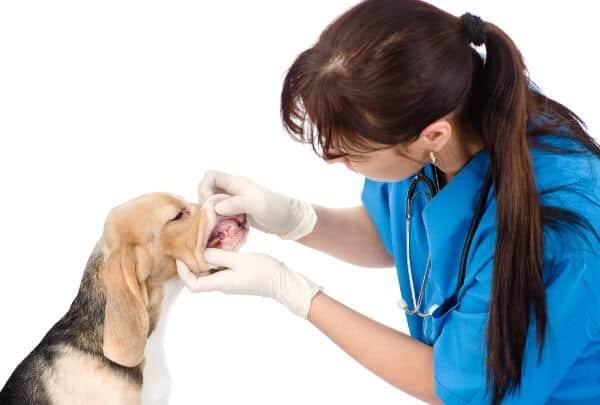
Course Details
Week 1 Aetiology and Pathogenesis Anatomy of the head Tooth and periodontal anatomy, and oral soft tissues Oral nomenclature Tooth types, nomenclature and formulae Eruption times Occlusion Learning objectives After completion of
Course Details
Week 1
Aetiology and Pathogenesis
Anatomy of the head
Tooth and periodontal anatomy, and oral soft tissues
Oral nomenclature
Tooth types, nomenclature and formulae
Eruption times
Occlusion
Learning objectives
After completion of this week, participants should be able to:
Identify tooth and periodontal structures
Explain the Modified Triadan System of numbering teeth in the dog and cat
Recognise normal occlusion
Week 2
Periodontology
Aetiology and pathogenesis of dental disease
Gingivitis
Periodontitis
Gingivostomatitis
Periodontal therapy
Scaling and polishing
Pocket control and therapy
Medications, homecare (brief), dental clinics (brief)
Learning objectives
After completion of this week, participants should be able to:
Describe how gingivitis develops and its progression to periodontal disease
Explain what gingivostomatitis is
Outline the process of safe ultrasonic tooth scaling and its purpose
Week 3
Oral Pathology and Treatment
Trauma and treatment options
Tooth fracture / discolouration / (sub) luxation
Dental diseases and treatment options
Tooth resorption / caries / periodontal disease
Malocclusion and treatment options
Traumatic / dental / skeletal malocclusions
Other conditions and treatment options
Enamel defects / dentigerous cysts / persistent deciduous / root dilacerations and abnormal morphology / tumours
Learning objectives
After completion of this week, participants should be able to:
Identify common pathologies associated with the teeth and oral cavity
Describe some potential treatment options for common pathologies
Week 4
Oral Examination and Charting
History taking and clinical examination – conscious oral examination
Pre-operative tests
Assessment under general anaesthesia – including anaesthesia induction, intubation, oral preparation, probing
Charting – what to fill in, disease scoring and making your chart work
Imaging and other investigations
Radiography – parallel and bisecting angle techniques
Biopsy
Learning objectives
After completion of this week, participants should be able to:
Confidently undertake a thorough conscious examination of a patient’s teeth
and oral cavity
Set up for and assist with assessment of the teeth and oral cavity in an anaesthetised patient
Accurately complete a dental chart which documents all pathology discovered upon examination
Week 5
Instrumentation and Dental Surgery
Instruments – use, care and maintenance
Dental machine and other powered equipment – use, care and maintenance
Ancillary equipment – use, care and maintenance
Preparation for and veterinary nursing assistance with surgery
Pre-, intra- and post-operatively, including analgesia
The role of intraoperative radiography
Learning objectives
After completion of this week, participants should be able to:
Differentiate between different instruments used for dental and oral procedures, and state what they are used for
Describe the proper use, care and maintenance of a range of dental instruments and equipment
Explain the benefits of oral radiography in veterinary patients and outline the basic, fundamental principles of the parallel and bisecting angle techniques
Week 6
Dental Clinics, Products and Homecare
What is an effective dental clinic
Types of patients attending dental clinics
Resources for dental clinic consultations
Products and interventions available to help with maintaining oral health
Oral homecare regimes
Effective dissemination of theoretical and practical oral hygiene advice
Client concordance and follow-up
Learning objectives
After completion of this week, participants should be able to:
Debate what makes a dental clinic effective
Explain the range of resources required to run an effective dental clinic, and the purpose of these resources
Describe how a range of products and interventions used to maintain optimal oral health work
Outline how to achieve and maintain client compliance with recommended oral homecare regimes
The course will be fully tutored by Claire Bloor and will consist of 15 hours of CPD given in various formats, including tutorials, tasks, case scenarios, forum discussions and quizzes. This course is tutored for 6 weeks, followed by a two week extension of untutored ‘catch up’ time, before the course officially ends.
All delegates will then have unlimited lifetime access to the learning material for future reference
Time
April 8 (Monday) - May 17 (Friday)
Location
Online
Speaker
Claire BloorClaire Bloor MA Ed, BSc (Hons) VN, RVN, PGCE, QTLS, Cert VN (Dent), IQA Veterinary Senior Lecturer – School of Veterinary Medicine, University of Central Lancashire

Course Details
This 4 week course will cover a range of clinical nutritional issues commonly encountered in first opinion practice. These will include those animals (feline and canine) with renal
Course Details
This 4 week course will cover a range of clinical nutritional issues commonly encountered in first opinion practice. These will include those animals (feline and canine) with renal disease, liver compromise, gastrointestinal disturbances, pancreatitis and urinary issues.
We will cover inappetence in animals and how to support these animals. We will investigate the route cause of inappetence and how pharmaceutical and nutritional support can aid in increasing calorific and nutrient intake. In all of these cases we will be looking at the evidence base behind the claims of diets and supplements and whether they are of benefit to our patients.
We will look at nutritional fashions and how to talk to clients about new trends that seem to be highlighted on-line almost continually. In order to do this we will have some case studies to work through where we can discuss different options to the nutritional management.
Week 1
Nutritional Assessment and Calculations
How to perform a nutritional assessment
Calculate energy requirements and how much to feed
Treatment regimens for inappetence
Instigating nutritional support
Learning objectives
After completion of this week, participants should be able to:
Perform a nutritional history and assessment of the animal
Calculate BER and RERs and apply this to how much to feed
Identify when nutritional support is required and how to do this
Week 2
Clinical Nutrition – Renal, Urinary, Liver and Cardiac
Clinical nutrition for renal, urinary, liver and cardiac disease
Look at each of the nutrient requirements for each of these management regimes
Learning objectives
After completion of this week, participants should be able to:
Make recommendations for clinical diets for renal, urinary, liver and cardiac disease
Understand the nutrient specifications for these diets
Discuss the benefits of these diets
Week 3
Clinical Nutrition – Gastrointestinal and Pancreatic
Clinical nutrition for gastrointestinal and pancreatitis
Look at each of the nutrient requirements for each of these management regimes
Learning objectives
After completion of this week, participants should be able to:
Make recommendations for clinical diets for range of gastrointestinal and pancreatitis
Understand the nutrient specifications for these diets
Discuss the benefits of these diets
Week 4
Nutritional Supplements and Trends
Supplements
Nutritional trends (including raw and homecooked diets)
Learning objectives
After completion of this week, participants should be able to:
Make recommendations for supplements for the diseases discussed in weeks 3 and 4
Look at the nutritional evidence behind nutritional fashions
Discuss raw and home cooked feeding with clients
The course will be fully tutored by Nicola Lakeman and will consist of 10 hours of CPD given in various formats, including tutorials, tasks, case studies, forum discussions and quizzes. This course is tutored for 4 weeks, followed by a two week extension of untutored ‘catch up’ time, before the course officially ends.
All delegates will then have unlimited lifetime access to the learning material for future reference
Time
April 22 (Monday) - May 17 (Friday)
Location
Online
Speaker
Nicola LakemanMSc, BSc(Hons), RVN, CertVNECC, CertSAN, VTS(Nutrition) Nutrition Manager, IVC Evidensia
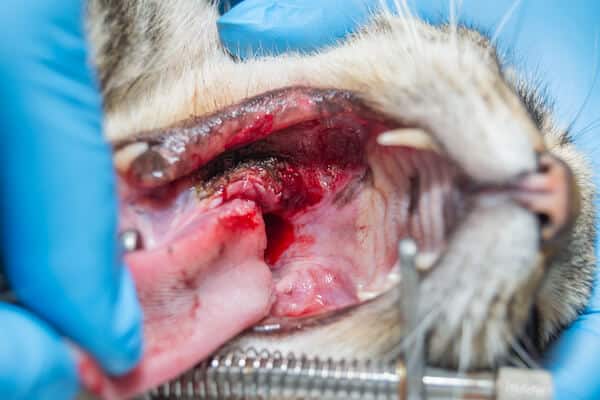
Course Details
Of the numerous cancers that affect our feline companions, lymphoma, squamous cell carcinoma, soft tissue sarcoma and mammary tumours are the most frequently diagnosed in the veterinary clinic. This 4 week
Course Details
Of the numerous cancers that affect our feline companions, lymphoma, squamous cell carcinoma, soft tissue sarcoma and mammary tumours are the most frequently diagnosed in the veterinary clinic.
This 4 week course dedicates a week per subject, where we explore the risk factors associated with each of these neoplasms and investigate the methods used to acquire a diagnosis. Treatment options will be discussed with particular detail placed on medical and surgical management techniques that can be applied to general practice and specialist nursing alike.
After completing this online course, participants will have a greater knowledge of these common diseases, enabling understanding of the prognosis and treatment goals; ultimately broadening communication and practical skills in the subject area.
This course is particularly suitable for nurses who have experience in oncology and are looking to broaden their knowledge and compliments the ‘Common Canine Cancer’ course with particular focus on feline friendly care. For nurses in general practice, the course ‘Introduction to Oncology’ may be more suitable.
Week 1
Mammary Tumours
Mammary tumours are a common tumour in cats which are often malignant, yet a small percentage are benign. Early detection and intervention can have a positive outcome and some patients go on to live disease-free lives, others require continuous treatment and monitoring.
Presentation and behaviour of mammary tumours
Diagnosis and staging
Treatment modalities and monitoring considerations
Learning objectives
After completion of this week, participants should be able to:
Explain the potential causes of mammary tumours in cats
List what investigative procedures may be necessary to secure a diagnosis and what safety factors should be observed when sampling masses
Understand which treatment modalities are most useful for which form of the disease
Describe the patient and client care considerations when managing cases of feline mammary tumours
Week 2
Lymphoma
Lymphoma is a cancer of the lymphocytes and/or lymphoid tissue, which is present in many locations within the body; presentation and treatment of these cases is dependant on location. This week we will cover:
Manifestation of feline lymphoma and categories of disease
Diagnosis, staging and prognostic indicators
Treatment options for feline lymphoma
Chemotherapy protocols, client expectations and how to create a feline friendly environment
Learning objectives
After completion of this week, participants should be able to:
List the common manifestations of feline lymphoma and the patient groups most affected
Understand the value of staging and monitoring the disease
Describe the subtypes of feline lymphoma and the difference in treatment approaches
Explain the rationale of a multimodal chemotherapy protocol and how it may impact on prognosis
Analyse personal skill set and determine how you could support feline patients with lymphoma using your practice facilities
Week 3
Squamous Cell Carcinoma
Squamous cell carcinoma is the most common form of head and mouth cancer in cats; the behaviour of this neoplasm is sometimes unpredictable and can be very invasive. On week three we discuss the presentation, investigation and treatment options available for these patients and look at some practices which are novel to veterinary medicine.
Presentation, diagnosis and staging of squamous cell carcinoma, including lymph node mapping
Treatment options and impact on prognosis
Surgical interventions, nursing support and rehabilitation
Introduction to electrochemotherapy and photodynamic therapy
Learning objectives
After completion of this week, participants should be able to:
Describe the different imaging techniques used to evaluate feline squamous cell carcinoma
List treatment options and prognostic indicators for feline squamous cell carcinoma
Understand the mechanism of action behind novel techniques for feline squamous cell carcinoma
Describe the common surgical interventions and post-operative patient considerations
Week 4
Soft Tissue Sarcoma
Feline injection site sarcoma (FISS) is one of the most common soft tissue sarcomas of cats. The disease may present as a minor mass to the owner but often this is just the tip of the iceberg. Week 4 looks at FISS in more detail and brings the courses learning materials all together in this last week
Soft tissue sarcoma pathophysiology overview
Diagnostic and staging processes
Treatment options, radiation and surgical management
Adjuvant (post-operative) chemotherapy and restaging
Learning objectives
After completion of this week, participants should be able to:
Describe the diagnostic approach to determining cancer diagnosis and tumour burden
Explain typical neoplastic behaviour of FISS and the impact of intervention on survival time
Understand the fundamental reasoning for adjuvant chemotherapy and the options for post-operative care
The course will be fully tutored by Nicola Read, and will consist of 10 hours of CPD given in various formats, including tutorials, tasks, case studies, forum discussions and quizzes. This course is tutored for 4 weeks, followed by a two week extension of untutored ‘catch up’ time, before the course officially ends.
All delegates will then have unlimited lifetime access to the learning material for future reference
Time
April 22 (Monday) - May 17 (Friday)
Location
Online
Speaker
Nicola ReadDipAVN (Medical), PgCert Veterinary Oncology, AFHEA, RVN Head Oncology Nurse, Royal Veterinary College
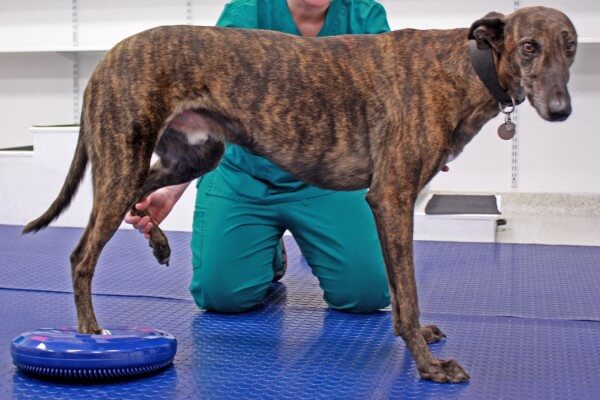
Course Details
Week 1 Physiotherapy Toolkit (Modalities) Electrotherapies Therapeutic hot/cold packs Manual therapies Applied exercise therapies Learning objectives After completion of this week, participants should be able to: Understand the principles and application
Course Details
Week 1
Physiotherapy Toolkit (Modalities)
Electrotherapies
Therapeutic hot/cold packs
Manual therapies
Applied exercise therapies
Learning objectives
After completion of this week, participants should be able to:
Understand the principles and application of electrotherapy including:
K-laser
Transcutaneous electrical nerve stimulation (TENS)
Neuromuscular electrical stimulation (NMES)
Pulsed magnetic therapy (Biomag)
Therapeutic ultrasound
Understand the use of therapeutic hot/ cold packs
Understand manual therapy and its application including:
Massage
Effleurage
Coupage
Joint mobilisations
Graded stretches
Understand applied exercise therapy including:
Strengthening and stabilising exercises
Balance and proprioceptive exercises
Functional exercises
Hydrotherapy
Week 2
Patient Assessment
Musculoskeletal patient assessment
Neurological patient assessment
Respiratory / critical care patient assessment
Learning objectives
After completion of this week, participants should be able to:
Carry out a basic musculoskeletal, neurological, and respiratory physiotherapy assessment
Understand valid outcome measures to guide patient treatment
How to write SOAP (subjective, objective, analysis, plan) notes to progress patient treatment
Week 3
Physiotherapy and Hydrotherapy Treatment Techniques
Early phase rehabilitation 0-2 weeks
Mid phase rehabilitation 2-6 weeks
Late phase rehabilitation 6-12 weeks
Patient discharge or maintenance physiotherapy programme
Learning objectives
After completion of this week, participants should be able to:
Carry out early physiotherapy treatment including:
Early manual therapy techniques
Early phase hot and cold pack treatment
Early electrotherapies to improve healing and for pain relief
Mid phase gentle exercise programmes including hydrotherapy
Late phase exercise therapy to include advanced strengthening, proprioceptive, balance and functional exercises
Late phase electrotherapies for pain relief, soft tissue injuries and muscle strengthening
Week 4
Physiotherapy Progression Plans and Home Exercise Programmes
Patient rehabilitation plans
Discharge and maintenance programmes
Home exercise plans
Learning objectives
After completion of this week, participants should be able to:
Learn how and when to progress patient plans from early to mid through to late stage rehabilitation to optimise patient outcomes
Understand when to discharge a patient, or to continue with a maintenance programme for chronic cases or surgical complications
Design home exercise programmes for owners to carry out
Week 5
Musculoskeletal Case Studies
CCL reconstruction – TPLO or lateral suture
Soft tissue injuries (tendinopathies, iliopsoas strains)
Fracture repair
Conservative management of chronic conditions, including hip dysplasia and elbow dysplasia
Learning objectives
After completion of this week, participants should be able to:
Consider appropriate assessment, treatment plan and progression of a musculoskeletal case study
Consider appropriate assessment, treatment plan and progression of a soft tissue case study
Consider appropriate assessment, treatment plan and progression of a fracture repair case study
Consider appropriate assessment, treatment plan and progression of a chronic condition case study
Week 6
Neurological and Respiratory (Intensive Care) Case Studies
Hemi- laminectomy (HLE)
Fibrocartilage embolism (FCE)
Pneumonia
Learning objectives
After completion of this week, participants should be able to:
Consider appropriate assessment, treatment plan and progression of a surgical neurological case study
Consider appropriate assessment, treatment plan and progression of a non-surgical case study
Consider appropriate assessment, treatment plan and progression of a respiratory (critical care) case study
This course will be fully tutored by Donna Carver, and will consist of 15 hours of CPD given in various formats, including tutorials, tasks, case studies, forum discussions and quizzes. This course is tutored for 6 weeks, followed by a two week extension of untutored ‘catch up’ time, before the course officially ends.
All delegates will then have unlimited lifetime access to the learning material for future reference
Time
April 29 (Monday) - June 7 (Friday)
Location
Online
Speaker
Donna CarverBSC(Hons) Physiotherapy, DipAVN (Surgical), RVN, MCSP Pain & Rehabilitation Service, Glasgow Veterinary School
may

Course Details
Week 1 Aetiology and Pathogenesis Anatomy of the head Tooth and periodontal anatomy, and oral soft tissues Oral nomenclature Tooth types, nomenclature and formulae Eruption times Occlusion Learning objectives After completion of
Course Details
Week 1
Aetiology and Pathogenesis
Anatomy of the head
Tooth and periodontal anatomy, and oral soft tissues
Oral nomenclature
Tooth types, nomenclature and formulae
Eruption times
Occlusion
Learning objectives
After completion of this week, participants should be able to:
Identify tooth and periodontal structures
Explain the Modified Triadan System of numbering teeth in the dog and cat
Recognise normal occlusion
Week 2
Periodontology
Aetiology and pathogenesis of dental disease
Gingivitis
Periodontitis
Gingivostomatitis
Periodontal therapy
Scaling and polishing
Pocket control and therapy
Medications, homecare (brief), dental clinics (brief)
Learning objectives
After completion of this week, participants should be able to:
Describe how gingivitis develops and its progression to periodontal disease
Explain what gingivostomatitis is
Outline the process of safe ultrasonic tooth scaling and its purpose
Week 3
Oral Pathology and Treatment
Trauma and treatment options
Tooth fracture / discolouration / (sub) luxation
Dental diseases and treatment options
Tooth resorption / caries / periodontal disease
Malocclusion and treatment options
Traumatic / dental / skeletal malocclusions
Other conditions and treatment options
Enamel defects / dentigerous cysts / persistent deciduous / root dilacerations and abnormal morphology / tumours
Learning objectives
After completion of this week, participants should be able to:
Identify common pathologies associated with the teeth and oral cavity
Describe some potential treatment options for common pathologies
Week 4
Oral Examination and Charting
History taking and clinical examination – conscious oral examination
Pre-operative tests
Assessment under general anaesthesia – including anaesthesia induction, intubation, oral preparation, probing
Charting – what to fill in, disease scoring and making your chart work
Imaging and other investigations
Radiography – parallel and bisecting angle techniques
Biopsy
Learning objectives
After completion of this week, participants should be able to:
Confidently undertake a thorough conscious examination of a patient’s teeth
and oral cavity
Set up for and assist with assessment of the teeth and oral cavity in an anaesthetised patient
Accurately complete a dental chart which documents all pathology discovered upon examination
Week 5
Instrumentation and Dental Surgery
Instruments – use, care and maintenance
Dental machine and other powered equipment – use, care and maintenance
Ancillary equipment – use, care and maintenance
Preparation for and veterinary nursing assistance with surgery
Pre-, intra- and post-operatively, including analgesia
The role of intraoperative radiography
Learning objectives
After completion of this week, participants should be able to:
Differentiate between different instruments used for dental and oral procedures, and state what they are used for
Describe the proper use, care and maintenance of a range of dental instruments and equipment
Explain the benefits of oral radiography in veterinary patients and outline the basic, fundamental principles of the parallel and bisecting angle techniques
Week 6
Dental Clinics, Products and Homecare
What is an effective dental clinic
Types of patients attending dental clinics
Resources for dental clinic consultations
Products and interventions available to help with maintaining oral health
Oral homecare regimes
Effective dissemination of theoretical and practical oral hygiene advice
Client concordance and follow-up
Learning objectives
After completion of this week, participants should be able to:
Debate what makes a dental clinic effective
Explain the range of resources required to run an effective dental clinic, and the purpose of these resources
Describe how a range of products and interventions used to maintain optimal oral health work
Outline how to achieve and maintain client compliance with recommended oral homecare regimes
The course will be fully tutored by Claire Bloor and will consist of 15 hours of CPD given in various formats, including tutorials, tasks, case scenarios, forum discussions and quizzes. This course is tutored for 6 weeks, followed by a two week extension of untutored ‘catch up’ time, before the course officially ends.
All delegates will then have unlimited lifetime access to the learning material for future reference
Time
April 8 (Monday) - May 17 (Friday)
Location
Online
Speaker
Claire BloorClaire Bloor MA Ed, BSc (Hons) VN, RVN, PGCE, QTLS, Cert VN (Dent), IQA Veterinary Senior Lecturer – School of Veterinary Medicine, University of Central Lancashire

Course Details
This 4 week course will cover a range of clinical nutritional issues commonly encountered in first opinion practice. These will include those animals (feline and canine) with renal
Course Details
This 4 week course will cover a range of clinical nutritional issues commonly encountered in first opinion practice. These will include those animals (feline and canine) with renal disease, liver compromise, gastrointestinal disturbances, pancreatitis and urinary issues.
We will cover inappetence in animals and how to support these animals. We will investigate the route cause of inappetence and how pharmaceutical and nutritional support can aid in increasing calorific and nutrient intake. In all of these cases we will be looking at the evidence base behind the claims of diets and supplements and whether they are of benefit to our patients.
We will look at nutritional fashions and how to talk to clients about new trends that seem to be highlighted on-line almost continually. In order to do this we will have some case studies to work through where we can discuss different options to the nutritional management.
Week 1
Nutritional Assessment and Calculations
How to perform a nutritional assessment
Calculate energy requirements and how much to feed
Treatment regimens for inappetence
Instigating nutritional support
Learning objectives
After completion of this week, participants should be able to:
Perform a nutritional history and assessment of the animal
Calculate BER and RERs and apply this to how much to feed
Identify when nutritional support is required and how to do this
Week 2
Clinical Nutrition – Renal, Urinary, Liver and Cardiac
Clinical nutrition for renal, urinary, liver and cardiac disease
Look at each of the nutrient requirements for each of these management regimes
Learning objectives
After completion of this week, participants should be able to:
Make recommendations for clinical diets for renal, urinary, liver and cardiac disease
Understand the nutrient specifications for these diets
Discuss the benefits of these diets
Week 3
Clinical Nutrition – Gastrointestinal and Pancreatic
Clinical nutrition for gastrointestinal and pancreatitis
Look at each of the nutrient requirements for each of these management regimes
Learning objectives
After completion of this week, participants should be able to:
Make recommendations for clinical diets for range of gastrointestinal and pancreatitis
Understand the nutrient specifications for these diets
Discuss the benefits of these diets
Week 4
Nutritional Supplements and Trends
Supplements
Nutritional trends (including raw and homecooked diets)
Learning objectives
After completion of this week, participants should be able to:
Make recommendations for supplements for the diseases discussed in weeks 3 and 4
Look at the nutritional evidence behind nutritional fashions
Discuss raw and home cooked feeding with clients
The course will be fully tutored by Nicola Lakeman and will consist of 10 hours of CPD given in various formats, including tutorials, tasks, case studies, forum discussions and quizzes. This course is tutored for 4 weeks, followed by a two week extension of untutored ‘catch up’ time, before the course officially ends.
All delegates will then have unlimited lifetime access to the learning material for future reference
Time
April 22 (Monday) - May 17 (Friday)
Location
Online
Speaker
Nicola LakemanMSc, BSc(Hons), RVN, CertVNECC, CertSAN, VTS(Nutrition) Nutrition Manager, IVC Evidensia

Course Details
Of the numerous cancers that affect our feline companions, lymphoma, squamous cell carcinoma, soft tissue sarcoma and mammary tumours are the most frequently diagnosed in the veterinary clinic. This 4 week
Course Details
Of the numerous cancers that affect our feline companions, lymphoma, squamous cell carcinoma, soft tissue sarcoma and mammary tumours are the most frequently diagnosed in the veterinary clinic.
This 4 week course dedicates a week per subject, where we explore the risk factors associated with each of these neoplasms and investigate the methods used to acquire a diagnosis. Treatment options will be discussed with particular detail placed on medical and surgical management techniques that can be applied to general practice and specialist nursing alike.
After completing this online course, participants will have a greater knowledge of these common diseases, enabling understanding of the prognosis and treatment goals; ultimately broadening communication and practical skills in the subject area.
This course is particularly suitable for nurses who have experience in oncology and are looking to broaden their knowledge and compliments the ‘Common Canine Cancer’ course with particular focus on feline friendly care. For nurses in general practice, the course ‘Introduction to Oncology’ may be more suitable.
Week 1
Mammary Tumours
Mammary tumours are a common tumour in cats which are often malignant, yet a small percentage are benign. Early detection and intervention can have a positive outcome and some patients go on to live disease-free lives, others require continuous treatment and monitoring.
Presentation and behaviour of mammary tumours
Diagnosis and staging
Treatment modalities and monitoring considerations
Learning objectives
After completion of this week, participants should be able to:
Explain the potential causes of mammary tumours in cats
List what investigative procedures may be necessary to secure a diagnosis and what safety factors should be observed when sampling masses
Understand which treatment modalities are most useful for which form of the disease
Describe the patient and client care considerations when managing cases of feline mammary tumours
Week 2
Lymphoma
Lymphoma is a cancer of the lymphocytes and/or lymphoid tissue, which is present in many locations within the body; presentation and treatment of these cases is dependant on location. This week we will cover:
Manifestation of feline lymphoma and categories of disease
Diagnosis, staging and prognostic indicators
Treatment options for feline lymphoma
Chemotherapy protocols, client expectations and how to create a feline friendly environment
Learning objectives
After completion of this week, participants should be able to:
List the common manifestations of feline lymphoma and the patient groups most affected
Understand the value of staging and monitoring the disease
Describe the subtypes of feline lymphoma and the difference in treatment approaches
Explain the rationale of a multimodal chemotherapy protocol and how it may impact on prognosis
Analyse personal skill set and determine how you could support feline patients with lymphoma using your practice facilities
Week 3
Squamous Cell Carcinoma
Squamous cell carcinoma is the most common form of head and mouth cancer in cats; the behaviour of this neoplasm is sometimes unpredictable and can be very invasive. On week three we discuss the presentation, investigation and treatment options available for these patients and look at some practices which are novel to veterinary medicine.
Presentation, diagnosis and staging of squamous cell carcinoma, including lymph node mapping
Treatment options and impact on prognosis
Surgical interventions, nursing support and rehabilitation
Introduction to electrochemotherapy and photodynamic therapy
Learning objectives
After completion of this week, participants should be able to:
Describe the different imaging techniques used to evaluate feline squamous cell carcinoma
List treatment options and prognostic indicators for feline squamous cell carcinoma
Understand the mechanism of action behind novel techniques for feline squamous cell carcinoma
Describe the common surgical interventions and post-operative patient considerations
Week 4
Soft Tissue Sarcoma
Feline injection site sarcoma (FISS) is one of the most common soft tissue sarcomas of cats. The disease may present as a minor mass to the owner but often this is just the tip of the iceberg. Week 4 looks at FISS in more detail and brings the courses learning materials all together in this last week
Soft tissue sarcoma pathophysiology overview
Diagnostic and staging processes
Treatment options, radiation and surgical management
Adjuvant (post-operative) chemotherapy and restaging
Learning objectives
After completion of this week, participants should be able to:
Describe the diagnostic approach to determining cancer diagnosis and tumour burden
Explain typical neoplastic behaviour of FISS and the impact of intervention on survival time
Understand the fundamental reasoning for adjuvant chemotherapy and the options for post-operative care
The course will be fully tutored by Nicola Read, and will consist of 10 hours of CPD given in various formats, including tutorials, tasks, case studies, forum discussions and quizzes. This course is tutored for 4 weeks, followed by a two week extension of untutored ‘catch up’ time, before the course officially ends.
All delegates will then have unlimited lifetime access to the learning material for future reference
Time
April 22 (Monday) - May 17 (Friday)
Location
Online
Speaker
Nicola ReadDipAVN (Medical), PgCert Veterinary Oncology, AFHEA, RVN Head Oncology Nurse, Royal Veterinary College

Course Details
Week 1 Physiotherapy Toolkit (Modalities) Electrotherapies Therapeutic hot/cold packs Manual therapies Applied exercise therapies Learning objectives After completion of this week, participants should be able to: Understand the principles and application
Course Details
Week 1
Physiotherapy Toolkit (Modalities)
Electrotherapies
Therapeutic hot/cold packs
Manual therapies
Applied exercise therapies
Learning objectives
After completion of this week, participants should be able to:
Understand the principles and application of electrotherapy including:
K-laser
Transcutaneous electrical nerve stimulation (TENS)
Neuromuscular electrical stimulation (NMES)
Pulsed magnetic therapy (Biomag)
Therapeutic ultrasound
Understand the use of therapeutic hot/ cold packs
Understand manual therapy and its application including:
Massage
Effleurage
Coupage
Joint mobilisations
Graded stretches
Understand applied exercise therapy including:
Strengthening and stabilising exercises
Balance and proprioceptive exercises
Functional exercises
Hydrotherapy
Week 2
Patient Assessment
Musculoskeletal patient assessment
Neurological patient assessment
Respiratory / critical care patient assessment
Learning objectives
After completion of this week, participants should be able to:
Carry out a basic musculoskeletal, neurological, and respiratory physiotherapy assessment
Understand valid outcome measures to guide patient treatment
How to write SOAP (subjective, objective, analysis, plan) notes to progress patient treatment
Week 3
Physiotherapy and Hydrotherapy Treatment Techniques
Early phase rehabilitation 0-2 weeks
Mid phase rehabilitation 2-6 weeks
Late phase rehabilitation 6-12 weeks
Patient discharge or maintenance physiotherapy programme
Learning objectives
After completion of this week, participants should be able to:
Carry out early physiotherapy treatment including:
Early manual therapy techniques
Early phase hot and cold pack treatment
Early electrotherapies to improve healing and for pain relief
Mid phase gentle exercise programmes including hydrotherapy
Late phase exercise therapy to include advanced strengthening, proprioceptive, balance and functional exercises
Late phase electrotherapies for pain relief, soft tissue injuries and muscle strengthening
Week 4
Physiotherapy Progression Plans and Home Exercise Programmes
Patient rehabilitation plans
Discharge and maintenance programmes
Home exercise plans
Learning objectives
After completion of this week, participants should be able to:
Learn how and when to progress patient plans from early to mid through to late stage rehabilitation to optimise patient outcomes
Understand when to discharge a patient, or to continue with a maintenance programme for chronic cases or surgical complications
Design home exercise programmes for owners to carry out
Week 5
Musculoskeletal Case Studies
CCL reconstruction – TPLO or lateral suture
Soft tissue injuries (tendinopathies, iliopsoas strains)
Fracture repair
Conservative management of chronic conditions, including hip dysplasia and elbow dysplasia
Learning objectives
After completion of this week, participants should be able to:
Consider appropriate assessment, treatment plan and progression of a musculoskeletal case study
Consider appropriate assessment, treatment plan and progression of a soft tissue case study
Consider appropriate assessment, treatment plan and progression of a fracture repair case study
Consider appropriate assessment, treatment plan and progression of a chronic condition case study
Week 6
Neurological and Respiratory (Intensive Care) Case Studies
Hemi- laminectomy (HLE)
Fibrocartilage embolism (FCE)
Pneumonia
Learning objectives
After completion of this week, participants should be able to:
Consider appropriate assessment, treatment plan and progression of a surgical neurological case study
Consider appropriate assessment, treatment plan and progression of a non-surgical case study
Consider appropriate assessment, treatment plan and progression of a respiratory (critical care) case study
This course will be fully tutored by Donna Carver, and will consist of 15 hours of CPD given in various formats, including tutorials, tasks, case studies, forum discussions and quizzes. This course is tutored for 6 weeks, followed by a two week extension of untutored ‘catch up’ time, before the course officially ends.
All delegates will then have unlimited lifetime access to the learning material for future reference
Time
April 29 (Monday) - June 7 (Friday)
Location
Online
Speaker
Donna CarverBSC(Hons) Physiotherapy, DipAVN (Surgical), RVN, MCSP Pain & Rehabilitation Service, Glasgow Veterinary School
june

Course Details
Week 1 Physiotherapy Toolkit (Modalities) Electrotherapies Therapeutic hot/cold packs Manual therapies Applied exercise therapies Learning objectives After completion of this week, participants should be able to: Understand the principles and application
Course Details
Week 1
Physiotherapy Toolkit (Modalities)
Electrotherapies
Therapeutic hot/cold packs
Manual therapies
Applied exercise therapies
Learning objectives
After completion of this week, participants should be able to:
Understand the principles and application of electrotherapy including:
K-laser
Transcutaneous electrical nerve stimulation (TENS)
Neuromuscular electrical stimulation (NMES)
Pulsed magnetic therapy (Biomag)
Therapeutic ultrasound
Understand the use of therapeutic hot/ cold packs
Understand manual therapy and its application including:
Massage
Effleurage
Coupage
Joint mobilisations
Graded stretches
Understand applied exercise therapy including:
Strengthening and stabilising exercises
Balance and proprioceptive exercises
Functional exercises
Hydrotherapy
Week 2
Patient Assessment
Musculoskeletal patient assessment
Neurological patient assessment
Respiratory / critical care patient assessment
Learning objectives
After completion of this week, participants should be able to:
Carry out a basic musculoskeletal, neurological, and respiratory physiotherapy assessment
Understand valid outcome measures to guide patient treatment
How to write SOAP (subjective, objective, analysis, plan) notes to progress patient treatment
Week 3
Physiotherapy and Hydrotherapy Treatment Techniques
Early phase rehabilitation 0-2 weeks
Mid phase rehabilitation 2-6 weeks
Late phase rehabilitation 6-12 weeks
Patient discharge or maintenance physiotherapy programme
Learning objectives
After completion of this week, participants should be able to:
Carry out early physiotherapy treatment including:
Early manual therapy techniques
Early phase hot and cold pack treatment
Early electrotherapies to improve healing and for pain relief
Mid phase gentle exercise programmes including hydrotherapy
Late phase exercise therapy to include advanced strengthening, proprioceptive, balance and functional exercises
Late phase electrotherapies for pain relief, soft tissue injuries and muscle strengthening
Week 4
Physiotherapy Progression Plans and Home Exercise Programmes
Patient rehabilitation plans
Discharge and maintenance programmes
Home exercise plans
Learning objectives
After completion of this week, participants should be able to:
Learn how and when to progress patient plans from early to mid through to late stage rehabilitation to optimise patient outcomes
Understand when to discharge a patient, or to continue with a maintenance programme for chronic cases or surgical complications
Design home exercise programmes for owners to carry out
Week 5
Musculoskeletal Case Studies
CCL reconstruction – TPLO or lateral suture
Soft tissue injuries (tendinopathies, iliopsoas strains)
Fracture repair
Conservative management of chronic conditions, including hip dysplasia and elbow dysplasia
Learning objectives
After completion of this week, participants should be able to:
Consider appropriate assessment, treatment plan and progression of a musculoskeletal case study
Consider appropriate assessment, treatment plan and progression of a soft tissue case study
Consider appropriate assessment, treatment plan and progression of a fracture repair case study
Consider appropriate assessment, treatment plan and progression of a chronic condition case study
Week 6
Neurological and Respiratory (Intensive Care) Case Studies
Hemi- laminectomy (HLE)
Fibrocartilage embolism (FCE)
Pneumonia
Learning objectives
After completion of this week, participants should be able to:
Consider appropriate assessment, treatment plan and progression of a surgical neurological case study
Consider appropriate assessment, treatment plan and progression of a non-surgical case study
Consider appropriate assessment, treatment plan and progression of a respiratory (critical care) case study
This course will be fully tutored by Donna Carver, and will consist of 15 hours of CPD given in various formats, including tutorials, tasks, case studies, forum discussions and quizzes. This course is tutored for 6 weeks, followed by a two week extension of untutored ‘catch up’ time, before the course officially ends.
All delegates will then have unlimited lifetime access to the learning material for future reference
Time
April 29 (Monday) - June 7 (Friday)
Location
Online
Speaker
Donna CarverBSC(Hons) Physiotherapy, DipAVN (Surgical), RVN, MCSP Pain & Rehabilitation Service, Glasgow Veterinary School
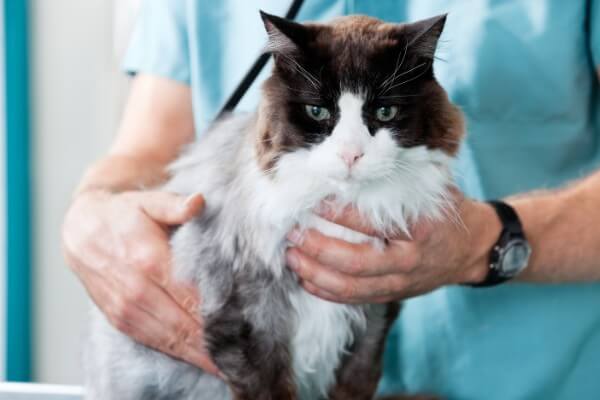
Course Details
Week 1 Feline Heart Disease Prevalence, aetiology and pathophysiology of feline heart disease Classification systems used to diagnose and treat feline cardiomyopathies Nursing care and treatment aims Learning objectives
Course Details
Week 1
Feline Heart Disease
Prevalence, aetiology and pathophysiology of feline heart disease
Classification systems used to diagnose and treat feline cardiomyopathies
Nursing care and treatment aims
Learning objectives
After completion of this week, participants should be able to:
Explain the pathophysiology of feline heart disease
Understand the American College of Veterinary Internal Medicine (ACVIM) classification system as it applies to feline cardiomyopathies
Be familiar with the best approach to a nurse a cat with heart disease and heart failure
Week 2
Canine Heart Disease
Prevalence, aetiology and pathophysiology of myxomatous mitral valve disease (MMVD) and dilated cardiomyopathy (DCM)
Classification systems used to diagnose and treat MMVD
Staging systems used to diagnose and treat DCM in dogs
Nursing care of dogs with heart disease and heart failure
Learning objectives
After completion of this week, participants should be able to:
Explain the pathophysiology of MMVD and DCM
Understand the ACVIM classification system as it applies to MMVD and the staging system as it applies to canine DCM
Be familiar with the best approach to nurse a dog with either MMVD or DCM
Week 3
Electrocardiography (ECG) – Theory
The ECG machine and settings
Achieving a good quality ECG trace
How to interpret an ECG
Learning objectives
After completion of this week, participants should be able to:
Set up an ECG and understand the settings
Apply theory to achieve a good quality ECG trace
Understand how to interpret an ECG, using an algorithmic system
Week 4
Electrocardiography (ECG) – Application
Application of theory from week 1 to cases
Anaesthesia and ECGs
Life threatening arrhythmias
Learning objectives
After completion of this week, participants should be able to:
Apply theoretical learning to practical cases
Understand the role of anaesthesia and surgery upon ECGs
Identify life threatening arrhythmias
Week 5
Heart Failure
Pathophysiology of heart failure
Acute life threatening and chronic management
Management of patients with heart failure
Learning objectives
After completion of this week, participants should be able to:
Understand how heart failure can occur
Identify patients with heart failure and nurse them appropriately
Recognise drugs used in the treatment of heart failure
Week 6
Diagnostic Tests and the Cardiac Patient
Diagnostic tests used in cardiac patients
How to approach the test and the patient
Evaluation of diagnostic tests in cardiac patients
Learning objectives
After completion of this week, participants should be able to:
Perform or assist with diagnostic tests with confidence
Apply best practice methods to achieve reliable and repeatable results
Understand the purpose of diagnostic tests used in cardiac medicine
The course will be fully tutored by Charlotte Pace and will consist of 15 hours of CPD given in various formats, including tutorials, tasks, case scenarios, forum discussions and quizzes. This course is tutored for 6 weeks, followed by a two week extension of untutored ‘catch up’ time, before the course officially ends.
All delegates will then have unlimited lifetime access to the learning material for future reference
Time
June 10 (Monday) - July 19 (Friday)
Location
Online
Speaker
Charlotte PaceBA (Hons), RVN, VTS (Cardiology), PGCert (VetEd), FHEA
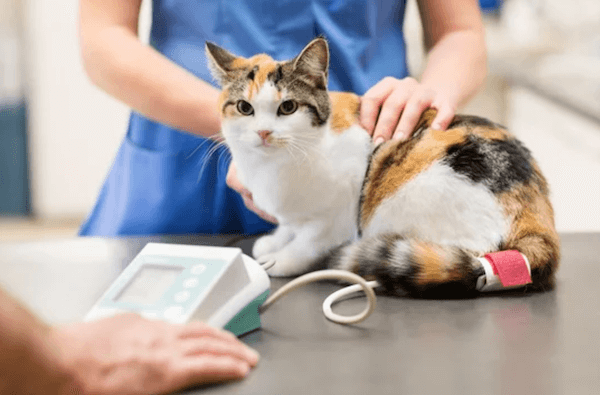
Course Details
Cats are living longer, and with the cat pet population increasing, it’s even more important that our ageing cats are seen regularly at the clinic. Older cats present with a
Course Details
Cats are living longer, and with the cat pet population increasing, it’s even more important that our ageing cats are seen regularly at the clinic. Older cats present with a special set of challenges, and the veterinary nurse plays a key part in monitoring and caring for these patients right through to end of life.
Week 1
Age Related Disease and Nursing Considerations
Age related diseases commonly seen in cats from the age of 7 years upwards
Findings from the Feline Healthy Ageing Clinic
How nursing care differs in ageing cats
Learning objectives
After completion of this week, participants should be able to:
Be aware of commonly seen age related diseases
Adapt nursing care for the ageing patient
Prepare hospitalisation for the ageing cat
Week 2
Creating and Running Ageing Cat Clinics
How to set up and run ageing cat clinics
Owner education and compliance
Feline friendly handling for the ageing patient
Learning objectives
After completion of this week, participants should be able to:
Create and run ageing cat clinics
Create an owner questionnaire
Understand the importance of owner education
Adapt handling skills to suit the ageing patient
Week 3
Nutritional Considerations
Nutrition for ageing life stages
Nutrition for specific age related disease
Learning objectives
After completion of this week, participants should be able to:
Make nutritional recommendations for the ageing cat
Make nutritional recommendations for age related diseases
Discuss the benefits of different diets and nutrient specifications
Week 4
Quality of Life and End of Life Care
Quality of life tools
Supporting the palliative patient
Euthanasia considerations
Learning objectives
After completion of this week, participants should be able to:
Understand the importance of using quality of life tools
Feel confident using quality of life tools
Communicate sensitively to owners surrounding end of life
Carry out euthanasia with consideration for the patient as well as the owner
This course will be fully tutored by Kelly Eyre and will consist of 10 hours of CPD given in various formats, including tutorials, tasks, case studies, forum discussions and quizzes. This course is tutored for 6 weeks, followed by a two week extension of untutored ‘catch up’ time, before the course officially ends.
All delegates will then have unlimited lifetime access to the learning material for future reference
Time
June 17 (Monday) - July 12 (Friday)
Location
Online
Speaker
Kelly EyreRVN, ISFM DipFN, AdvCertFB Clinical Lead, Royal Canin Feline Healthy Ageing Clinic, University of Liverpool
july

Course Details
Week 1 Feline Heart Disease Prevalence, aetiology and pathophysiology of feline heart disease Classification systems used to diagnose and treat feline cardiomyopathies Nursing care and treatment aims Learning objectives
Course Details
Week 1
Feline Heart Disease
Prevalence, aetiology and pathophysiology of feline heart disease
Classification systems used to diagnose and treat feline cardiomyopathies
Nursing care and treatment aims
Learning objectives
After completion of this week, participants should be able to:
Explain the pathophysiology of feline heart disease
Understand the American College of Veterinary Internal Medicine (ACVIM) classification system as it applies to feline cardiomyopathies
Be familiar with the best approach to a nurse a cat with heart disease and heart failure
Week 2
Canine Heart Disease
Prevalence, aetiology and pathophysiology of myxomatous mitral valve disease (MMVD) and dilated cardiomyopathy (DCM)
Classification systems used to diagnose and treat MMVD
Staging systems used to diagnose and treat DCM in dogs
Nursing care of dogs with heart disease and heart failure
Learning objectives
After completion of this week, participants should be able to:
Explain the pathophysiology of MMVD and DCM
Understand the ACVIM classification system as it applies to MMVD and the staging system as it applies to canine DCM
Be familiar with the best approach to nurse a dog with either MMVD or DCM
Week 3
Electrocardiography (ECG) – Theory
The ECG machine and settings
Achieving a good quality ECG trace
How to interpret an ECG
Learning objectives
After completion of this week, participants should be able to:
Set up an ECG and understand the settings
Apply theory to achieve a good quality ECG trace
Understand how to interpret an ECG, using an algorithmic system
Week 4
Electrocardiography (ECG) – Application
Application of theory from week 1 to cases
Anaesthesia and ECGs
Life threatening arrhythmias
Learning objectives
After completion of this week, participants should be able to:
Apply theoretical learning to practical cases
Understand the role of anaesthesia and surgery upon ECGs
Identify life threatening arrhythmias
Week 5
Heart Failure
Pathophysiology of heart failure
Acute life threatening and chronic management
Management of patients with heart failure
Learning objectives
After completion of this week, participants should be able to:
Understand how heart failure can occur
Identify patients with heart failure and nurse them appropriately
Recognise drugs used in the treatment of heart failure
Week 6
Diagnostic Tests and the Cardiac Patient
Diagnostic tests used in cardiac patients
How to approach the test and the patient
Evaluation of diagnostic tests in cardiac patients
Learning objectives
After completion of this week, participants should be able to:
Perform or assist with diagnostic tests with confidence
Apply best practice methods to achieve reliable and repeatable results
Understand the purpose of diagnostic tests used in cardiac medicine
The course will be fully tutored by Charlotte Pace and will consist of 15 hours of CPD given in various formats, including tutorials, tasks, case scenarios, forum discussions and quizzes. This course is tutored for 6 weeks, followed by a two week extension of untutored ‘catch up’ time, before the course officially ends.
All delegates will then have unlimited lifetime access to the learning material for future reference
Time
June 10 (Monday) - July 19 (Friday)
Location
Online
Speaker
Charlotte PaceBA (Hons), RVN, VTS (Cardiology), PGCert (VetEd), FHEA

Course Details
Cats are living longer, and with the cat pet population increasing, it’s even more important that our ageing cats are seen regularly at the clinic. Older cats present with a
Course Details
Cats are living longer, and with the cat pet population increasing, it’s even more important that our ageing cats are seen regularly at the clinic. Older cats present with a special set of challenges, and the veterinary nurse plays a key part in monitoring and caring for these patients right through to end of life.
Week 1
Age Related Disease and Nursing Considerations
Age related diseases commonly seen in cats from the age of 7 years upwards
Findings from the Feline Healthy Ageing Clinic
How nursing care differs in ageing cats
Learning objectives
After completion of this week, participants should be able to:
Be aware of commonly seen age related diseases
Adapt nursing care for the ageing patient
Prepare hospitalisation for the ageing cat
Week 2
Creating and Running Ageing Cat Clinics
How to set up and run ageing cat clinics
Owner education and compliance
Feline friendly handling for the ageing patient
Learning objectives
After completion of this week, participants should be able to:
Create and run ageing cat clinics
Create an owner questionnaire
Understand the importance of owner education
Adapt handling skills to suit the ageing patient
Week 3
Nutritional Considerations
Nutrition for ageing life stages
Nutrition for specific age related disease
Learning objectives
After completion of this week, participants should be able to:
Make nutritional recommendations for the ageing cat
Make nutritional recommendations for age related diseases
Discuss the benefits of different diets and nutrient specifications
Week 4
Quality of Life and End of Life Care
Quality of life tools
Supporting the palliative patient
Euthanasia considerations
Learning objectives
After completion of this week, participants should be able to:
Understand the importance of using quality of life tools
Feel confident using quality of life tools
Communicate sensitively to owners surrounding end of life
Carry out euthanasia with consideration for the patient as well as the owner
This course will be fully tutored by Kelly Eyre and will consist of 10 hours of CPD given in various formats, including tutorials, tasks, case studies, forum discussions and quizzes. This course is tutored for 6 weeks, followed by a two week extension of untutored ‘catch up’ time, before the course officially ends.
All delegates will then have unlimited lifetime access to the learning material for future reference
Time
June 17 (Monday) - July 12 (Friday)
Location
Online
Speaker
Kelly EyreRVN, ISFM DipFN, AdvCertFB Clinical Lead, Royal Canin Feline Healthy Ageing Clinic, University of Liverpool
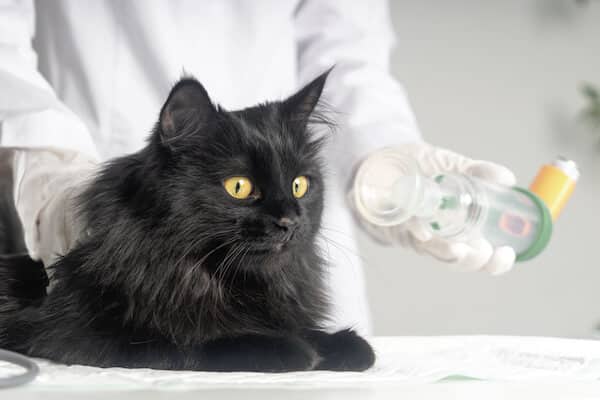
Course Details
Week 1 Feline Cardiomyopathies Cardiovascular anatomy and physiology Common cardiomyopathies affecting cats Treatment of feline cardiomyopathies The owners role in monitoring cardiomyopathies Learning objectives After completion of this week, participants
Course Details
Week 1
Feline Cardiomyopathies
Cardiovascular anatomy and physiology
Common cardiomyopathies affecting cats
Treatment of feline cardiomyopathies
The owners role in monitoring cardiomyopathies
Learning objectives
After completion of this week, participants should be able to:
Describe the normal physiology of the heart
Describe common disease processes which affect the feline heart
Understand the role of diet within feline cardiomyopathies
Discuss various treatment options available for feline cardiomyopathies
Understand the role nurses and owners can play in monitoring these cases
Week 2
Feline Triaditis
Brief review of gastrointestinal, pancreatic and hepatic anatomy and physiology
Pathophysiology of triaditis in the cat (inflammatory bowel disease, pancreatitis and cholangitis)
Advanced imaging and diagnostic techniques
Treatment options available both as an inpatient and an outpatient
Learning objectives
After completion of this week, participants should be able to:
Discuss the disease process of triaditis including the associated clinical signs
Understand how nurses can support patients through advanced imaging (flexible endoscopy / abdominal ultrasound)
Understand how to assist with the collection of pathological samples in these cases
Discuss the long term management of triaditis and the potential for ongoing disease
Week 3
Feline Asthma
Overview of respiratory anatomy and physiology
Predisposed breeds
Computed tomography and bronchoscopy
Treatment of feline asthma
Learning objectives
After completion of this week, participants should be able to:
Describe the clinical pathological changes associated with feline asthma
Discuss advanced imaging techniques that can be utilised in the work up of these cases
Confidently and competently support the general anaesthesia of a cat with respiratory disease
Discharge a patient to owners and confidently discuss the treatment of asthmatic cats
Week 4
Feline Infectious Peritonitis
The pathophysiology of FIP including both ‘wet’ and ‘dry’ forms
Transmission of FIP
Treatment options available for FIP
Learning objectives
After completion of this week, participants should be able to:
Understand the predisposing factors for the development of FIP
Discuss the clinical signs associated with FIP
Indicate the importance of infection control
Identify treatment options and protocols currently available
Advise owners how to limit the potential for disease transmission within households
This course will be fully tutored by Beth Thomas and will consist of 10 hours of CPD given in various formats, including tutorials, tasks, case studies, forum discussions and quizzes. This course is tutored for 6 weeks, followed by a two week extension of untutored ‘catch up’ time, before the course officially ends.
All delegates will then have unlimited lifetime access to the learning material for future reference
Time
July 29 (Monday) - August 23 (Friday)
Location
Online
Speaker
Beth ThomasVTS (SAIM), RVN Internal Medicine Nurse, VetsNow Manchester Referrals
august

Course Details
Week 1 Feline Cardiomyopathies Cardiovascular anatomy and physiology Common cardiomyopathies affecting cats Treatment of feline cardiomyopathies The owners role in monitoring cardiomyopathies Learning objectives After completion of this week, participants
Course Details
Week 1
Feline Cardiomyopathies
Cardiovascular anatomy and physiology
Common cardiomyopathies affecting cats
Treatment of feline cardiomyopathies
The owners role in monitoring cardiomyopathies
Learning objectives
After completion of this week, participants should be able to:
Describe the normal physiology of the heart
Describe common disease processes which affect the feline heart
Understand the role of diet within feline cardiomyopathies
Discuss various treatment options available for feline cardiomyopathies
Understand the role nurses and owners can play in monitoring these cases
Week 2
Feline Triaditis
Brief review of gastrointestinal, pancreatic and hepatic anatomy and physiology
Pathophysiology of triaditis in the cat (inflammatory bowel disease, pancreatitis and cholangitis)
Advanced imaging and diagnostic techniques
Treatment options available both as an inpatient and an outpatient
Learning objectives
After completion of this week, participants should be able to:
Discuss the disease process of triaditis including the associated clinical signs
Understand how nurses can support patients through advanced imaging (flexible endoscopy / abdominal ultrasound)
Understand how to assist with the collection of pathological samples in these cases
Discuss the long term management of triaditis and the potential for ongoing disease
Week 3
Feline Asthma
Overview of respiratory anatomy and physiology
Predisposed breeds
Computed tomography and bronchoscopy
Treatment of feline asthma
Learning objectives
After completion of this week, participants should be able to:
Describe the clinical pathological changes associated with feline asthma
Discuss advanced imaging techniques that can be utilised in the work up of these cases
Confidently and competently support the general anaesthesia of a cat with respiratory disease
Discharge a patient to owners and confidently discuss the treatment of asthmatic cats
Week 4
Feline Infectious Peritonitis
The pathophysiology of FIP including both ‘wet’ and ‘dry’ forms
Transmission of FIP
Treatment options available for FIP
Learning objectives
After completion of this week, participants should be able to:
Understand the predisposing factors for the development of FIP
Discuss the clinical signs associated with FIP
Indicate the importance of infection control
Identify treatment options and protocols currently available
Advise owners how to limit the potential for disease transmission within households
This course will be fully tutored by Beth Thomas and will consist of 10 hours of CPD given in various formats, including tutorials, tasks, case studies, forum discussions and quizzes. This course is tutored for 6 weeks, followed by a two week extension of untutored ‘catch up’ time, before the course officially ends.
All delegates will then have unlimited lifetime access to the learning material for future reference
Time
July 29 (Monday) - August 23 (Friday)
Location
Online
Speaker
Beth ThomasVTS (SAIM), RVN Internal Medicine Nurse, VetsNow Manchester Referrals
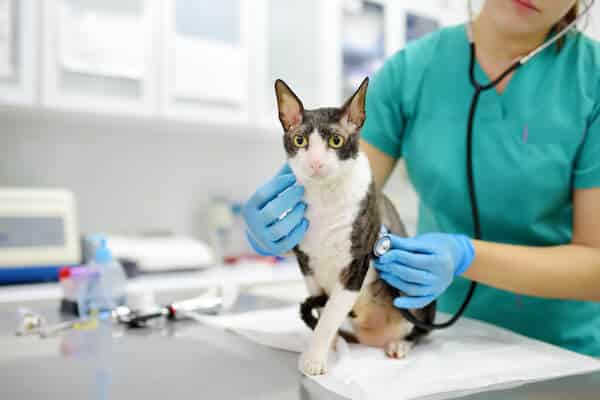
Course Details
Course Summary This eCPD tutorial will discuss the most common age related diseases we see in ageing cats, and provide information on setting up and running ageing cat clinics
Course Details
Course Summary
This eCPD tutorial will discuss the most common age related diseases we see in ageing cats, and provide information on setting up and running ageing cat clinics in practice. Running these clinics can help us to detect age related diseases early, helping us to improve the length and quality of life in our ageing cats.
Course Tutor
Kelly Eyre RVN, ISFM DipFN, AdvCertFB
Clinical Lead, Royal Canin Feline Healthy Ageing Clinic, University of Liverpool
Course Length
The course is worth 75 minutes of CPD for UK delegates and 1.25 AVNAT points for Australian and New Zealand delegates
The course is provided with unlimited lifetime access for on-demand learning
Course Notes
Unfortunately, course notes are not available with this tutorial
Release date: Aug 2024
Time
august 1 (Thursday) - 31 (Saturday)
Location
Online
Speaker
Kelly EyreRVN, ISFM DipFN, AdvCertFB Clinical Lead, Royal Canin Feline Healthy Ageing Clinic, University of Liverpool



